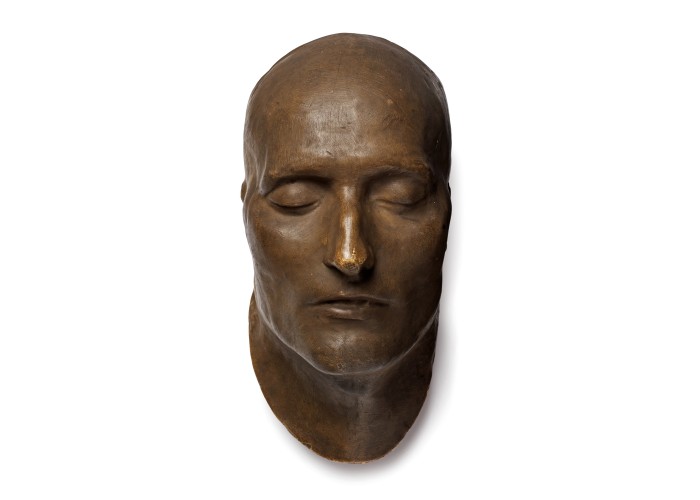Death Mask of Napoleon
This is the death mask of Napoleon Bonaparte, a cast of the French Emperor’s face made from his corpse. Before the invention of photography it was common practice to make plaster or wax casts of the faces of famous people after they had died. Napoleon died on 5th May 1821, imprisoned on the island of St Helena at the age of 51.
After his defeat at Waterloo in 1815, Napoleon had been exiled to St. Helena, a tiny island in the South Atlantic. Here the British and their German, Austrian, Russian and Spanish allies hoped to keep the former Emperor from ever threatening European peace again.
There is controversy over who made the original cast of Napoleon’s features on the day following his death (6th May 1821). Some believe that it was Napoleon’s own doctor, Francois Carlo Antommarchi; others, that it was an army surgeon called Francis Burton. Probably more than one cast was made, as four original casts are said to exist today. In any event, numerous copies in bronze and marble appeared on the market as soon as the original casts reached Paris.
In the death mask above Napoleon looks serene and youthful. In reality he had been suffering terrible ill health and pain in the last months of his life and looked emaciated and prematurely old. Since arriving at St. Helena at the end of 1815 he had led a miserable and frustrating existence. Longwood House, where he lived with his staff, was damp, unhealthy and infested with vermin. He spent his time dictating his memoirs, playing cards and taking long baths. He detested the governor, Sir Hudson Lowe, who was afraid that he might escape and constrained him with petty rules and wrangles.
The cause of Napoleon’s death has been hotly debated for years but the fact is that the English doctors and Antommarchi, who did the autopsy, found widespread stomach cancer. Further contention surrounded his burial in a glade on the island. Lowe and Napoleon’s attendants could not agree on the wording of the headstone so it was left blank.
Despite his obscure end the Napoleonic legend lived on in France. Finally in 1840 the ex-Emperor got the send-off he craved. His remains were removed from St Helena and given a magnificent state funeral in Paris. Thousands lined the route of the cortege to Les Invalides where he was reburied in an elaborate sarcophagus with detailed inscriptions of his triumphs.
-
Curatorial info
- Originating Museum: Apsley House / English Heritage
- Production Date: c. 1821
- Material: Plaster
-
Use this image
You can download and use the high resolution image for use in a non-profit environment such as a school or college, but please take note of the license type and rights holder information below
- Rights Holder: Copyright Apsley House / English Heritage.
- License Type: Creative Commons
Find it here
This object is in the collection of Apsley House – English Heritage







